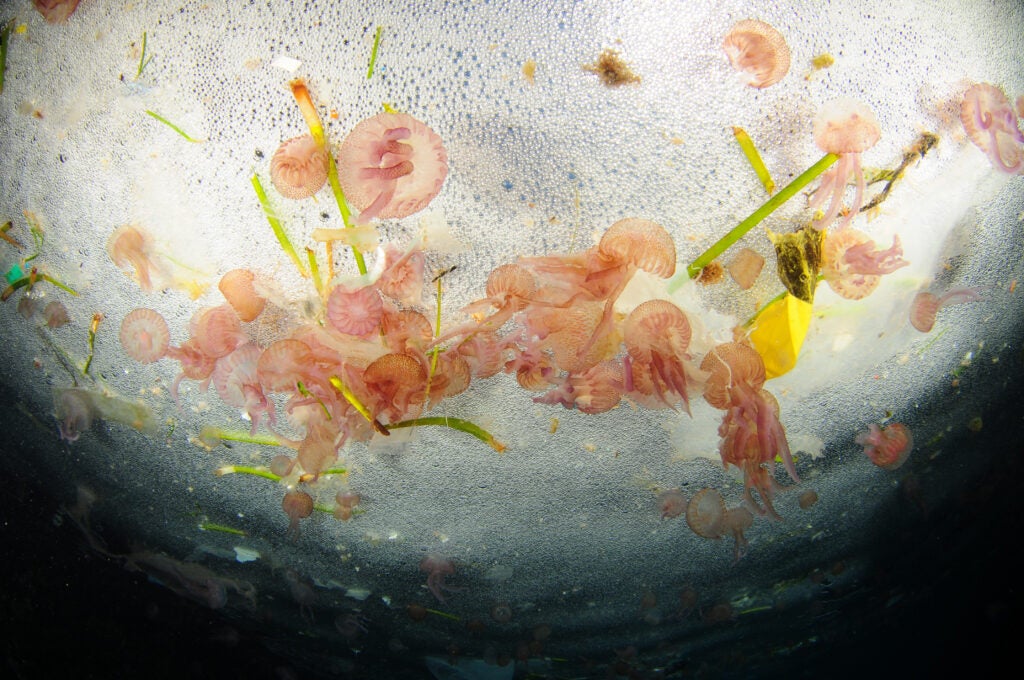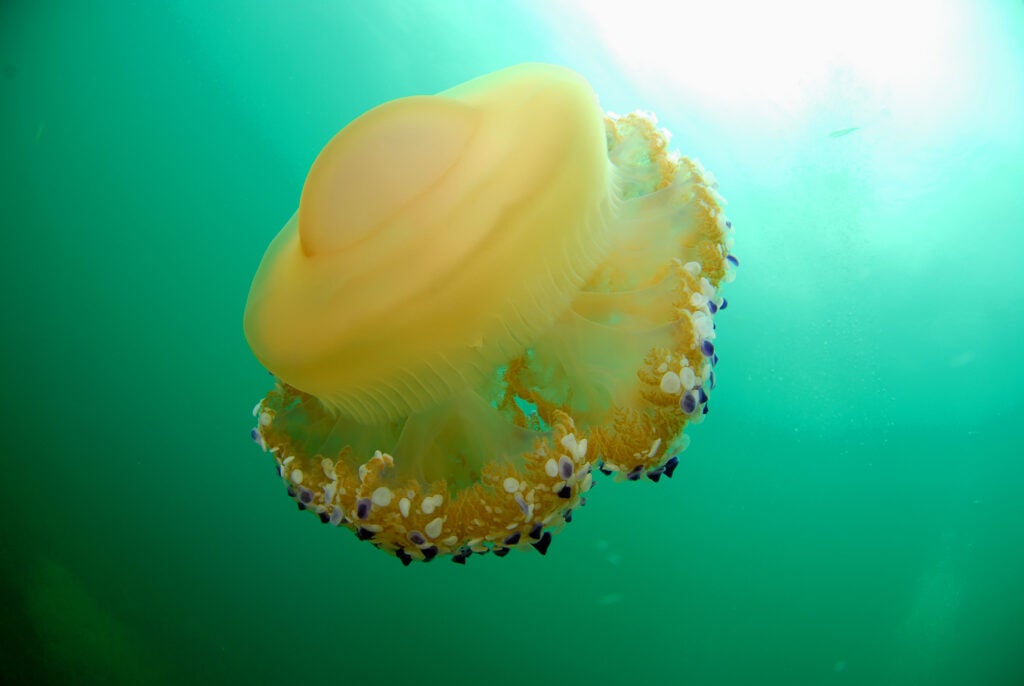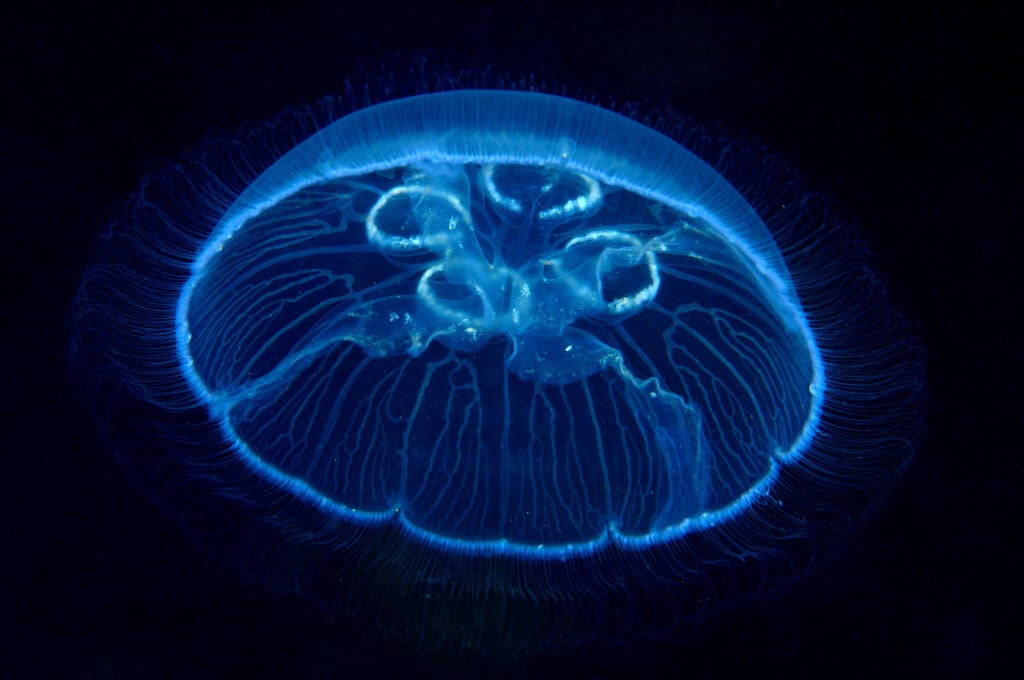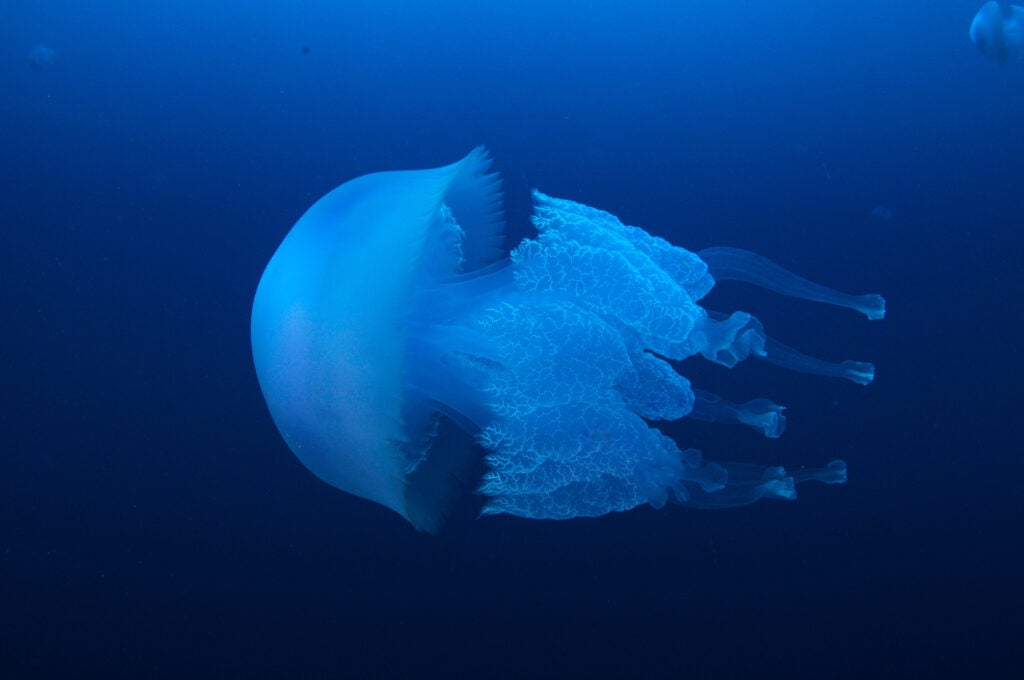July 25, 2023
Why are there more and more jellyfish in the sea?
In recent years we have seen how jellyfish have become increasingly important in the marine ecosystem.
They have been around in the sea for hundreds of millions of years, and are a fundamental part of the marine ecosystem, but their presence is a source of great controversy, as they can affect tourism or fishing.
They seem to be more abundant now, and we get this impression when we go for a swim or cast our nets to catch fish. We know that these interactions with human activities were not as common in the past, and although some of this is explained by the greater numbers of people entering the sea, there are also more jellyfish.
Are there more jellyfish than before?
Jellyfish are very abundant in the marine environment. In addition, their biological cycles mean that their numbers can explode at certain times. All this is natural, but a number of human actions are making life easier for them.
For many years now, there have been warnings about changes in the species composition of marine ecosystems. As vertebrates are disappearing (mainly due to overfishing), we are giving invertebrates more opportunities to occupy their niches.
The abundance of jellyfish could be linked to a lack of predators, greater availability of nutrients, mild winters that allow for a longer breeding season, and so on.
But sometimes there are huge jellyfish blooms that we are not so aware of, as they remain away from the beaches and stay in the open sea. This may be the result of ocean currents. It could also be due to large quantities of freshwater reaching the coastal zone via rivers, as this creates a barrier to jellyfish, which prefer more saline waters.
The construction of artificial structures in the sea has also provided some species with new areas to which they can attach, facilitating their development and distribution.

Are jellyfish dangerous?
The main public concern related to jellyfish is the possibility of being stung by one. The vast majority of jellyfish are harmless to humans, as they are not strong enough for their “stingers” to penetrate beyond our skin and inject us with their irritating substances. The “fried egg”, “barrel” and “moon” jellyfish are very abundant in Spanish waters, but they are not dangerous for humans (except if they are exceptionally large or someone is very sensitive to jellyfish venom).
Most interactions occur with the so-called mauve stinger, whose stings can be particularly painful and irritating.
But their effects are not limited to health problems; they also impact the environment and other human activities, such as fishing.

Jellyfish can cover fishermen’s nets, making them useless for catching fish. They can also feed on tonnes of eggs and larvae of both commercial and non-commercial species. Large numbers of jellyfish can wipe out enormous quantities of plankton species, including crustacean larvae, molluscs, tunicates, worms, and so on. This reduces the availability of food for other species and limits the reproductive and growth success of many organisms.
How many types of jellyfish are there?
Not everything we call a jellyfish is a jellyfish. True jellyfish –or scyphozoans– number only about 200 species. And most of the stings reported around the world are usually caused by just over a dozen species. In the Mediterranean, the mauve stinger is responsible for 70% of these interactions.
True jellyfish are those whose most important phase is exactly that, the jellyfish phase –where they live freely in the water column– while their polyp phase is very short and during which they do not usually come into conflict with humans.
There are other similar species that also have a free-swimming phase of life, like hydrozoans, but their polyp (or substrate-attached phase) is usually more important – their “jellyfish” form is rarely capable of inflicting any harm on humans (except in very specific cases).
Then there are the box jellyfish, which are similar to true jellyfish in terms of how important their jellyfish phase is, but they have some morphological differences. There are barely fifty known species, although these include the extremely dangerous “sea wasps” (Chironex fleckeri and Carukia barnesi), which can be deadly to humans.
Apart from this, there are other species that look similar, such as planktonic tunicates, comb jellies and siphonophores. These groups encompass more than 300 gelatinous-looking species that float in the water column or on the surface of the water and can be mistaken for jellyfish. Some are completely harmless, like the planktonic tunicates and comb jellies, while others have a mild or strong stinging effect, such as some siphonophores. This latter group includes the so-called Portuguese man o’war(Physalia physalis), whose stings are painful, highly irritating and, in exceptional cases, lethal.
Who eats jellyfish?
Jellyfish are eaten by a number of marine species. These include some sea turtles, such as the leatherback turtle (Dermochelys coriacea) whose appetite for jellyfish is well known. But there are a large number of species that prey on them, including many species of fish like tuna and sunfish, seabirds, crabs such as hermit crabs, and even corals and other jellyfish.
So, if we do not want an overabundance of jellyfish, we should let predators control them naturally.
What is the most abundant jellyfish?
The moon jellyfish (Aurelia aurita), also known as the “common”, or “saucer” jellyfish, is possibly the species with the widest global distribution.

However, the most abundant jellyfish tend to reside in deep areas, far from human eyes. This is the case, for example, of the narcomedusa Solmissus albescens, which is a hydrozoan, but which, unusually, does not have a polyp phase.
Millions upon millions of these narcomedusae populate the deep sea, consuming copepods and other small crustaceans, and serving as food for many fish and molluscs, as well as other organisms.
What will happen to jellyfish in the future?
Changes in the marine ecosystem (higher temperatures, milder winters, increased nutrient pollution, overexploitation of fish, increase of man-made structures in the sea, etc.) may set the ideal stage for the expansion and dominance of jellyfish in the world’s seas and oceans.

Oceana’s campaigns address some of the main reasons for jellyfish proliferation, including overfishing and the destruction of marine habitats. Each one of our successes helps to keep the ecosystem in balance and ensure that jellyfish play their proper ecological role.

